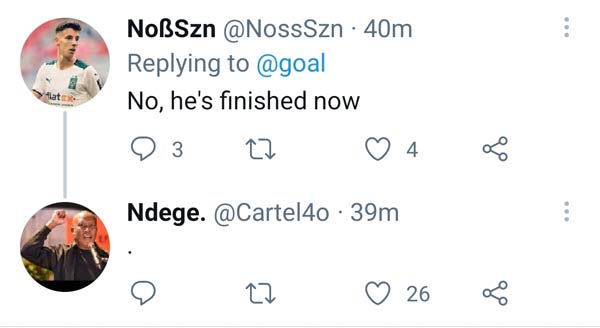If someone replies to a Tweet with a dot or a full stop character, then it means that they disagree with it.
For example, if you post “Pineapple on pizza is great” on your Twitter account and someone replies to your Tweet with a dot, then it means that they do not like pineapple on pizza.
By replying with a dot, they are giving onlookers the opportunity to like their Tweet instead of yours.
This is kind of like starting an impromptu Internet poll.
People who agree with your statement can like your Tweet, while people who disagree with you can like the reply.
The dot is another way of saying “ratio”.
Essentially, this is just another way of pulling a ratio on someone.
Take the following example.

A screenshot from Twitter.
Here, you will notice three things.
- The first user has made a statement about how soccer star Lionel Messi is past it.
- A user called Ndege has replied to his Tweet with a full stop character.
- More users have liked Ndege’s “dot reply” than the original statement.
In this case, the first user has been “ratio’d”.
In other words, the reply to his Tweet has more likes than his.
This means that most onlookers disagree with him.
Why reply with a dot though? Why not just say that you disagree?
By replying with a dot, the person is disagreeing with the Tweet without having to go through the bother of writing out a full argument against it.
It is kind of like saying “this Tweet does not deserve a proper reply”.
It is a way of telling someone that their argument is so stupid that it does not deserve a proper response.
Another point worth mentioning is that the exact same “arguments” are often repeated on social media on an hourly basis.
In other words, the person who is replying with a dot might have already seen the same statement a hundred times.
As a result, typing out a full reply might seem like a waste of energy to them.